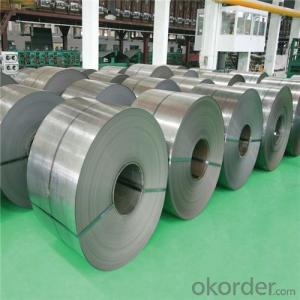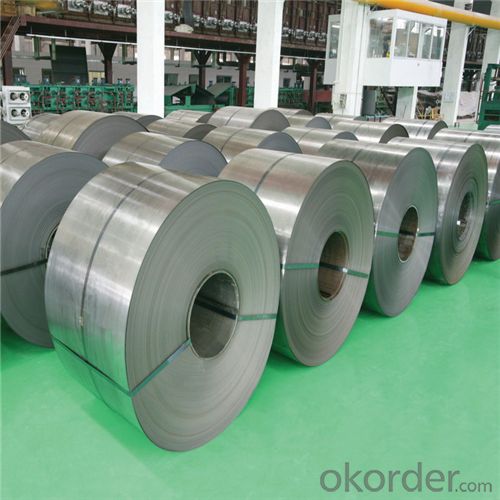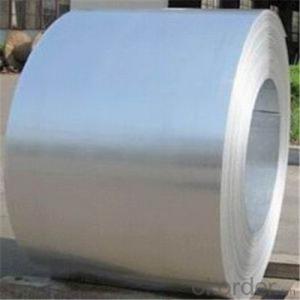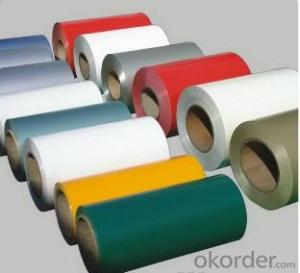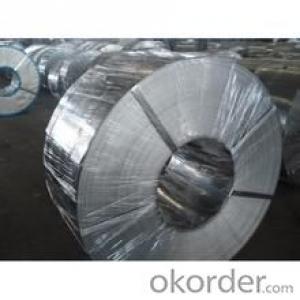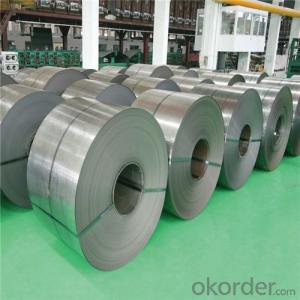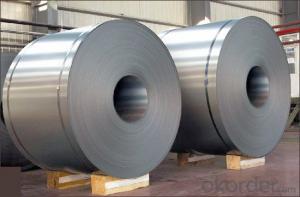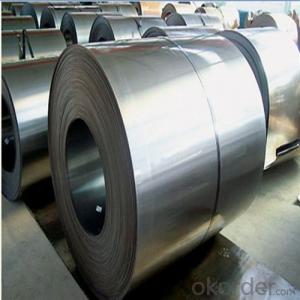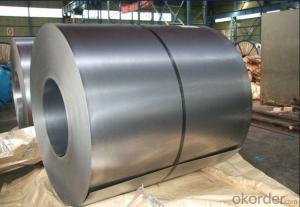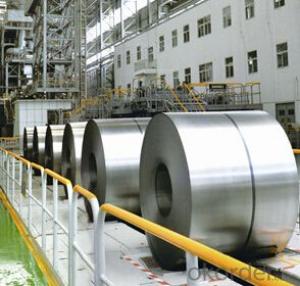Pure Cold Rolled Steel Coil Used for Industry with Much Low Price
- Loading Port:
- Shanghai
- Payment Terms:
- TT OR LC
- Min Order Qty:
- 25 m.t.
- Supply Capability:
- 5000 m.t./month
OKorder Service Pledge
OKorder Financial Service
You Might Also Like
Pure Cold Rolled Steel Coil Used for Industry
1.Structure of Cold Rolled Steel Coil Description
Cold rolling means that hot rolled steel coil is rolled below recrystallization temperature after pickling, and its finished product is full hard coil. After annealing process for full hard coil, the finished product is cold rolled production. The thin gauge cold rolled steel sheet and strip steel have advantages of low surface roughness, high dimension accuracy and good mechanical properties etc, and which have been widely used in auto manufacturing, home appliance, architecture, aviation, precision instrument, hardware and enameling industry etc.
2.Main Features of the Cold Rolled Steel Coil
•High Purity
•Easy control and operation
•High strength
•Fast melting
•Competitive price
•Best Service
3. Cold Rolled Steel Coil Images
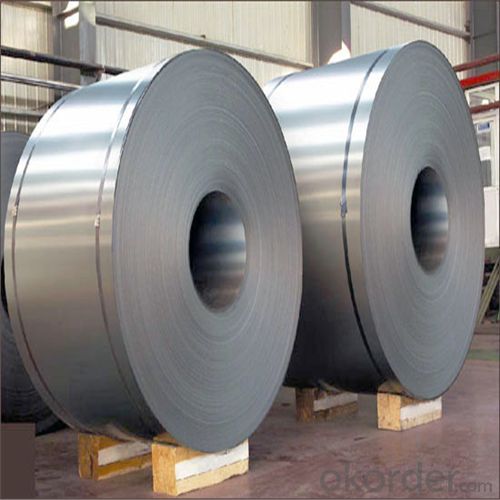
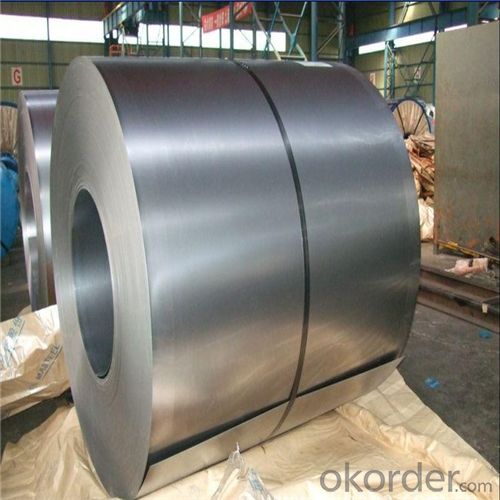
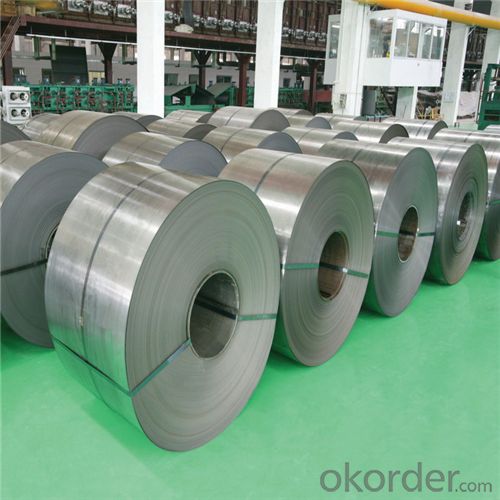
4. Cold Rolled Steel Coil Specification
COLD ROLLED STEEL COIL | |
Thicknenss | 0.10mm-4.00mm |
Width | 600mm-2000mm |
Sheets length | 1200-6000mm |
Coil inner diameter | 508-610mm |
Surface treatement | matt finish/bright finish,oiling/dry, bright anneal/black anneal |
Coil weight | 3-5t |
5.FAQ of Cold Rolled Steel Coil
We have organized several common questions for our clients,may help you sincerely:
①How about your company?
A world class manufacturer & supplier of castings forging in carbon steel and alloy steel,is one of the large-scale professional investment casting production bases in China,consisting of both casting foundry forging and machining factory. Annually more than 8000 tons Precision casting and forging parts are exported to markets in Europe,America and Japan. OEM casting and forging service available according to customer’s requirements.
②How to guarantee the quality of the products?
We have established the international advanced quality management system,every link from raw material to final product we have strict quality test;We resolutely put an end to unqualified products flowing into the market. At the same time, we will provide necessary follow-up service assurance.
③How long can we receive the product after purchase?
In the purchase of product within three working days, We will arrange the factory delivery as soon as possible. The pecific time of receiving is related to the state and position of customers.Commonly 7 to 10 working days can be served.
- Q: What are the different types of steel coil welding methods?
- There are three main types of steel coil welding methods: butt welding, lap welding, and flash welding. Butt welding involves joining two ends of steel coils by aligning them and welding them together. Lap welding, on the other hand, involves overlapping the ends of the coils and welding them together. Flash welding is a method where the ends of the coils are placed in contact with each other and a high electric current is passed through them to create a weld.
- Q: What is the role of steel coils in the supply chain?
- The supply chain heavily relies on steel coils, especially in the manufacturing and construction sectors. These coils, typically made from hot-rolled steel, are essential raw materials for a wide range of products like automobiles, appliances, construction materials, and industrial goods. The journey of steel coils in the supply chain begins with the production of raw steel, which is then processed and shaped into coils at steel mills. These coils are then transported to different manufacturing facilities where they are transformed into finished products. Throughout this process, steel coils act as an intermediary product that is easy to transport, stack, and manipulate according to various manufacturing requirements. One major advantage of using steel coils in the supply chain is their strength and durability. Steel possesses high tensile strength, enabling it to withstand substantial loads and pressures. This makes steel coils perfect for applications that require sturdy materials like structural components in buildings, heavy machinery, and vehicles. Furthermore, steel coils offer high customization, allowing manufacturers to tailor their dimensions and specifications to meet specific needs. This flexibility ensures the efficient delivery of steel coils that align with the requirements of diverse industries and projects. In terms of logistics, steel coils are typically transported in large quantities using specialized equipment such as flatbed trucks, railcars, or even ships. Effective logistics planning is crucial to ensure timely delivery and minimize transportation costs. Additionally, proper storage and handling are vital to prevent damage to the coils during transit and storage. Overall, steel coils play a vital role in the supply chain as versatile raw materials that can be shaped and transformed into various end products. Their strength, durability, and flexibility make them an essential component in industries that rely on high-quality steel, ultimately contributing to the overall economic growth and development of numerous sectors.
- Q: full discription about hydrolics used in steel melting shop with hyd valve is use in thair circit too ?
- The correct spelling is hydraulics. I haven't heard the term steel melting shop you probably means a foundry or a steel mill The most obvious example i can think of is hydraulic-operated fork lifts. Hydraulic cylinders are used to lift the forks and to tilt them upwards or downwards. The valves are coneccted to levers next to the steering wheel. Hydraulic pressure is supplied by a hydraulic pump driven by a propane or diesel engine. In some forklift designs the wheels are also not connected directly to the engine, but driven by hydraulic motors. There are also a large variety of machines used in steel mills and metalworking companies to cut and shape metal parts. for example, press brakes, plate cutting shears, stamping presses, hole punch machines, drawing presses, etc. These types all operate in much the same basic way. They use a very large cylinder or group of cylinders to apply many tons of force to different kinds of metal working tools.
- Q: And by how much? I'm pretty sure that sterling silver is stronger, but I'm wondering if I could still use a metal stamp to stamp into something that's stainless steel - if it would be soft enough?
- Advantages of sterling silver: * This metal is quite easy for jewelry-makers to work with; therefore, it is simpler for them to create more intricate types of pieces with sterling silver. * The tarnish that can develop on sterling silver is well-liked by some people. Disadvantages of sterling silver: * The aforementioned tarnish is not so well-liked by other people; some people dislike how sterling silver looks as it ages. * Because this material is so soft, it is susceptible to dings, dents, and scratches. Advantages of stainless steel: * Stainless steel pieces will not oxidize or tarnish at all. * Many people find it to be shinier than sterling silver because it offers great light reflection when it is polished to look like chrome. * Stainless steel can also be brushed to look like pewter, too. * Stainless steel is extremely durable and will resist dents, scratches, and chips better than most any other jewelry material. * The cost of stainless steel is quite affordable - much more so than jewelry pieces made from other materials. Disadvantages of stainless steel: * People may know that you have not spent a lot of money on a piece of jewelry (this may or may not be an issue for some jewelry wearers).
- Q: What are the different types of steel coil storage containers?
- There are several types of steel coil storage containers, including coil racks, coil cradles, coil saddles, coil cassettes, coil pallets, and coil cones. These containers are designed to safely store and transport steel coils, providing support and stability to prevent damage or shifting during handling and storage.
- Q: How are steel coils used in the production of steel screws?
- Steel coils are used in the production of steel screws as they serve as the raw material for manufacturing the screws. The steel coils are unwound and fed into a machine that cuts and shapes the steel into the desired screw form. This process ensures that the screws are made from high-quality steel and have the necessary strength and durability.
- Q: Cooling bed generally a part of the steel rolling mills
- Another type of cooling bed is used for square stock. It consists of several beams with angles cut upward from the bottom. The beams move in alternating fashion so that the square beam is lifted and sat into the next 'tooth'. The angle is cut so that the beam rotates as it is set down. This keeps the stock straight while it cools.
- Q: How do steel coils contribute to the HVACR industry?
- Steel coils play a crucial role in the HVACR (Heating, Ventilation, Air Conditioning, and Refrigeration) industry by serving as a primary component in various applications. These coils are typically made from a durable and corrosion-resistant material, such as stainless steel or galvanized steel, which ensures their longevity in demanding HVACR environments. One of the most common uses of steel coils in the HVACR industry is in air conditioning systems. These coils are responsible for transferring heat between the refrigerant and the surrounding air. The coils, often referred to as evaporator coils, absorb heat from the indoor air, cooling it down and removing moisture. They then release the heat outside through a condenser coil, allowing for efficient cooling and dehumidification of the air. Steel coils are also utilized in heat exchangers, which are vital components in HVACR systems. Heat exchangers transfer thermal energy between two fluids, allowing for efficient heating or cooling. Steel coils, often in the form of finned tubes, provide a large surface area for heat transfer and help enhance the overall efficiency of the system. Furthermore, steel coils are extensively used in the construction of ductwork, which is the network of channels that distribute conditioned air throughout a building. These coils are formed into various shapes and sizes to fit specific ductwork designs, ensuring optimal airflow and temperature control. Additionally, the durability and strength of steel coils make them suitable for withstanding the pressure and forces exerted by airflows in duct systems. In refrigeration systems, steel coils are integral to the process of transferring heat out of an enclosed space, such as a refrigerator or freezer. The coils, often referred to as condenser coils, release heat from the refrigerant as it changes from a high-pressure gas to a high-pressure liquid. This allows for the cooling and preservation of perishable goods, making steel coils essential in the food service and cold storage industries. Overall, steel coils contribute significantly to the HVACR industry by enabling efficient heat transfer, optimal temperature control, and reliable operation of various HVACR systems. Their durability, corrosion resistance, and versatility make them a crucial component in providing comfortable and controlled environments in residential, commercial, and industrial settings.
- Q: How are steel coils processed for edge trimming or shearing?
- Steel coils are processed for edge trimming or shearing through a series of steps. First, the coil is unwound and passed through a leveller to ensure a flat surface. Then, the edges are inspected for defects and marked for trimming. Next, the coil is fed into a shearing machine or a slitting line, where the excess material is cut off to achieve the desired width. Finally, the trimmed coil is rewound and prepared for further processing or shipment.
- Q: density of mild steel (MS) is 7850 KG per metre cube , but i want to know the density of stainless steel
- This Site Might Help You. RE: what is the density of stainless steel? density of mild steel (MS) is 7850 KG per metre cube , but i want to know the density of stainless steel
Send your message to us
Pure Cold Rolled Steel Coil Used for Industry with Much Low Price
- Loading Port:
- Shanghai
- Payment Terms:
- TT OR LC
- Min Order Qty:
- 25 m.t.
- Supply Capability:
- 5000 m.t./month
OKorder Service Pledge
OKorder Financial Service
Similar products
Hot products
Hot Searches
Related keywords
